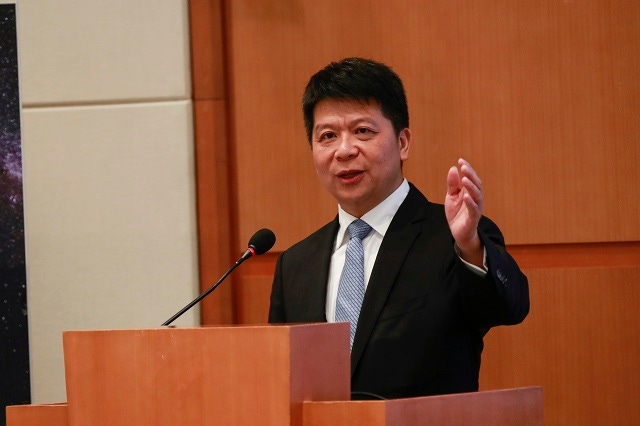Despite coming under heavy political pressure over the last couple of months, Huawei has reported $107 billion in total revenues, 20% year-on-year.
March 29, 2019

In spite of the growing geopolitical spat it has found itself in the centre of, Huawei reported $107 billion in total revenues for the 2018 financial year, up 20% year-on-year.
The consumer business unit is now clearly the most successful, though there is still minor momentum in the carrier business. This is the unit which has been suffering the most through the political scrutiny, though there have been some rays of sunshine.
Although the consumer business unit grew 45%, astronomical growth in an overarching sluggish segment, revenues in the carrier business declined by 1% year-on-year. This business unit has declined, but when you consider context, few will complain with these figures.
A 1% decline is still a decline, but Huawei has now collected 39 5G commercial contracts and shipped 50,000 5G base stations globally. In the month since Mobile World Congress, Huawei has collected an additional five contracts and shipped 10,000 base stations. Not a bad return for a business which has become the political punching bag of the world.
“Through heavy, consistent investment in 5G innovation, alongside large-scale commercial deployment, Huawei is committed to building the world’s best network connections,” said Guo Ping, Huawei’s Rotating Chairman (pictured).
“Throughout this process, Huawei will continue to strictly comply with all relevant standards to build secure, trustworthy, and high-quality products. As we work towards this goal, we have been explicitly clear: Cyber security and user privacy protection are at the absolute top of our agenda.”
Looking at the numbers, total revenues hit roughly $107 billion, year-on-year growth of 20%, while profits jumped 25% to $8.8 billion. This is a slight dip on the 27% growth from twelve months ago, but it is still a very strong performance. The consumer unit clawed in roughly $51.98 billion, the carrier business accounted for $43.80 billion and enterprise brought in the majority of the rest. A very small fourth business unit focusing on cloud is worth keeping an eye on, but today this is less than 1% of the group’s total revenues.
Taken in isolation, you wouldn’t think this is a company which is facing intense scrutiny and aggression from US politicians. The numbers tell a healthy story, but we all know there is a political storm brewing around the vendor.
This week has seen another hurdle thrown in front of the Huawei thundering train, with the Huawei Cyber Security Evaluation Centre (HCSEC) releasing a new report questioning the ability of the vendor to fix software mistakes. The HCSEC has stopped short of calling for a ban, however it is a damning opinion on Huawei’s security credentials.
As we understand it, Huawei was informed of the report 48 hours prior to its publication and while it will not necessarily be thrilled with the outcome, it will have to swallow the opinion. Huawei’s DNA is built in the hardware world therefore it is unsurprising the firm is suffering some complications in the software segments. However, Huawei is unlikely to be alone in with this challenge.
Huawei’s competitors are facing the same challenge having also evolved from the hardware businesses. All of these vendors are learning the ropes, adapting business culture and attempting to link up different acquisitions into a fluid, cohesive offering. Huawei is facing criticism, partly as it is a proxy for the Chinese government, though software is a difficult business which everyone is finding challenging.
Ultimately these numbers tell a story which we have suspected might been the case for a while. Huawei is not a company which will be killed off by the political climate, but it will not dominate the 5G era in the same way it championed the 4G.
About the Author(s)
You May Also Like








.png?width=300&auto=webp&quality=80&disable=upscale)


_1.jpg?width=300&auto=webp&quality=80&disable=upscale)


.png?width=800&auto=webp&quality=80&disable=upscale)